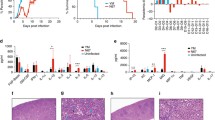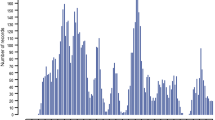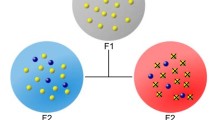Abstract.
Angiostrongylus costaricensis is a nematode found mainly as a rodent parasite. Laboratory mice were experimentally infected with this parasite. It is known that there is great variability in mortality among inbred mouse strains after infection with this nematode. The survival rate at 5 weeks after infection of A/J mice was 90.5%, whereas that of SM/J mice was only 33.3%, with severe anemia and decreased body weight about 3 weeks after infection. To identify host susceptibility genes for infection with this nematode, we undertook chromosomal mapping by a whole-genome scanning approach in (A/J×SM/J)F2 mice. We mapped a host susceptibility locus (here designated Acsns, for Angiostrongylus costaricensis nematode susceptibility locus) to the telomeric portion of Chromosome 19 (peak LOD=4.35). We also identified two loci on Chr 13 and Chr 17 that have epistatic effects on host survival. This is the first report on host susceptibility loci for helminth infection mapped by whole-genome scanning.
Similar content being viewed by others
Author information
Authors and Affiliations
Additional information
Electronic Publication
Rights and permissions
About this article
Cite this article
Ohno, T., Ishih, A., Tanaka, S. et al. Chromosomal mapping of host susceptibility loci to Angiostrongylus costaricensis nematode infection in mice. Immunogenetics 53, 925–929 (2002). https://doi.org/10.1007/s00251-001-0424-6
Received:
Accepted:
Issue Date:
DOI: https://doi.org/10.1007/s00251-001-0424-6




